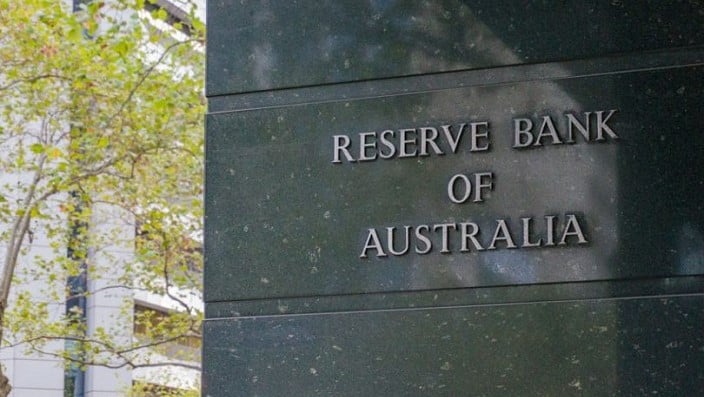 While the cash rate was dormant for a long while in recent years, it’s been pushed back to the centre of attention thanks to the RBA’s multiple cash rate rises in 2022. It’s easy to feel confused or worried about the effect it’ll have on your finances.
While the cash rate was dormant for a long while in recent years, it’s been pushed back to the centre of attention thanks to the RBA’s multiple cash rate rises in 2022. It’s easy to feel confused or worried about the effect it’ll have on your finances.
Before we delve into why the RBA cash rate is rising, what is the cash rate anyway?
The cash rate is the interest rate on unsecured overnight loans between banks - RBA
It pretty much dictates how much interest banks are paying on the loans they take out, which can have a big effect on the economy.
But why raise the cash rate? What is the RBA trying to do?
Why Does the RBA raise the Cash Rate?
Well, there are several factors that affect the cash rate.
The labour market, for example, works as a good indicator for the RBA. If unemployment is high and wage growth is low, the RBA may lower cash rates to encourage spending and growth in the economy. On the other hand, the RBA may raise the cash rate if unemployment is low and wage growth is high.
Another indicator the RBA looks at is the global economy and foreign markets. If these are uncertain or weak, raising the cash rate could help support Australia’s economy.
However, the biggest indicator the RBA is looking at right now is inflation, which we’ll investigate below.
Does Increasing the Cash Rate Reduce Inflation?
That’s the million-dollar question, but unfortunately there’s no million-dollar answer.
Inflation is influenced by a variety of other factors, and there’s no one answer to managing it. In its recent press release, the RBA stated that right now inflation is being driven by a lot of demand without sufficient supply to back it up. If you add global uncertainty and high commodity prices to the mix, the RBA has quite a doozy on their hands.
Increasing the cash rate can help address some of the causes of inflation, such as low interest rates and a slow market, but it’s a fine line that the RBA must walk.
How Often Can the RBA Raise Cash Rates?
We’ve had multiple rate increases since April 2022!
There’s no hard or fast rule as to how often the RBA can raise or lower cash rates, but this isn’t the first time we’ve seen the cash rate change quickly.
Looking at this graph compiled by the RBA, we can see a few periods of time where the cash rate fluctuated dramatically, and a few periods where it didn’t change for months at a time.
For example, from January 1990 until July 1993 the cash rate decreased 15 times, starting off at a massive 17.50% before steadying at 4.75%. This happened again from August 2008 until April 2009, where in a span of eight months the cash rate dropped six times before steadying.
However, there are periods of time where the cash rate doesn’t change at all. From September 2016 until May 2019 there were no changes to the cash rate, and then again in December 2020 until April 2022.
Cash Rates v Interest Rate – What is the difference?
While the cash rate and interest rates are connected, they are two separate things. While a low cash rate means that banks pay less interest when lending between themselves, a high cash rate makes it more expensive for these loans to occur.
As Alasdair Duncan from CANSTAR explains, when the cash rate increases it is common practice for banks to pass on these costs to their customers by increasing the interest they charge on their loans.
In addition to increasing rates on loans, banks may sometimes raise interest rates on deposit and savings accounts if the cash rate increases.
There’s no guarantee that interest rates will increase along with the cash rate, but generally banks monitor the RBA’s decisions and alter their interest rates accordingly.
Something that both the cash rate and interest rate have in common, though, is that they are both measured in basis points. Tamika Seeto from CANSTAR has a good explanation of basis points:
One basis point is equal to 0.01%, or 1/100th of 1%. Put another way, 100 basis points (bps) are equivalent to 1% or one percentage point
CANSTAR
Let’s look at November 2022’s cash rate increase as an example. It went from 2.60% up to 2.85%, meaning it went up by 0.25%, or 25 basis points.
While they may take some getting used to, basis points clear up a lot of confusion when calculating changes to your interest rate, particularly with changes of less than one percent.
Interest Rate Rises and Home Loan Repayments
Understanding RBA cash rate and its impact on home ownership
While these recent cash rate increases don’t guarantee that the interest rate on your home loan will rise, the possibility is there.
The first step you can take to prepare is to examine your rate – has it been a while since you’ve last checked? Once you’ve done this, you can compare the market and see if you can get a better deal.
One of the key things to investigate if you have a fixed rate is when its term expires. Make sure you know what rate your loan will revert to and whether your repayments will change as well. This is especially true if you fixed your rate in 2020 or 2021 when the cash rate and interest rates were much lower than they are today.
Another thing to ask yourself is if you have a repayment buffer. Being a little ahead with your repayments, or using an offset account, can give you more security and help you save more on interest in the long run. Offset accounts and redrawing can offer you more flexibility in your loan and may help you save more in the long run. Both features vary from loan to loan, so reach out to your lender for more individualised info if you’re thinking of using them.
Finally, don’t forget that your lender is there to help if you’re experiencing hardship. The goal is to get you to own your home, not be on a loan forever, so reach out to your lender if you need some assistance staying on track.
Budgeting for Future Rate Increases
Future rate increases are very hard to predict, but there are ways that you can budget and prepare for change.
- If you don’t have one already, setting up a household budget is a great way to monitor your spending and helps you identify areas where you can save. You can use our helpful budget calculator to track your income and spending, all in the same place!
- On a related point, keeping an eye on your savings is always a good idea, and you can use our savings goal calculator to set up a reachable goal or look at your progress.
- As we mentioned earlier, calculating how much your home loan repayments are can help you better plan your finances. Depending on your loan you may be able to make extra repayments, so it’s good to take that into account as well.
This article is intended to provide general information of an educational nature only. This information has been prepared without taking into account your objectives, financial situation or needs. Therefore, before acting on this information, you should consider its appropriateness having regard to these matters and the product terms and conditions. Terms, conditions, fees, charges and credit criteria apply. Information in this article is current as at the date of publication.


